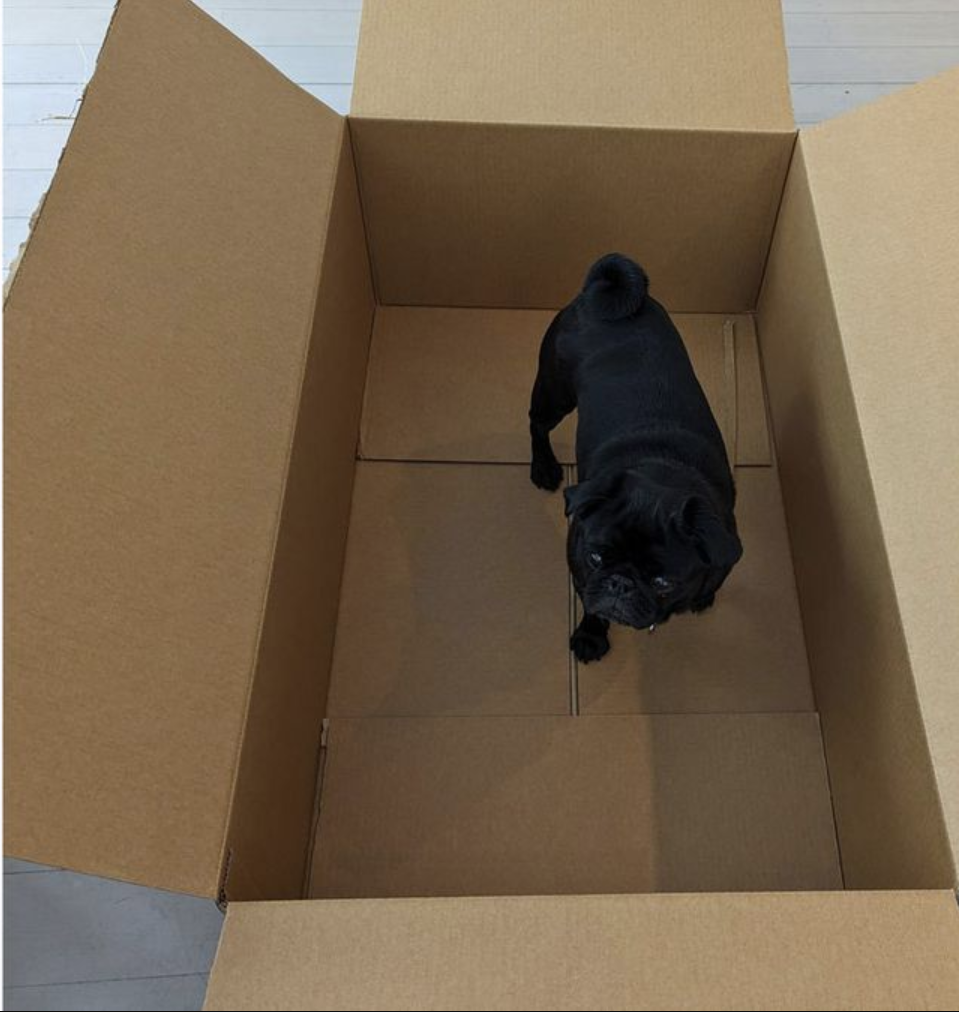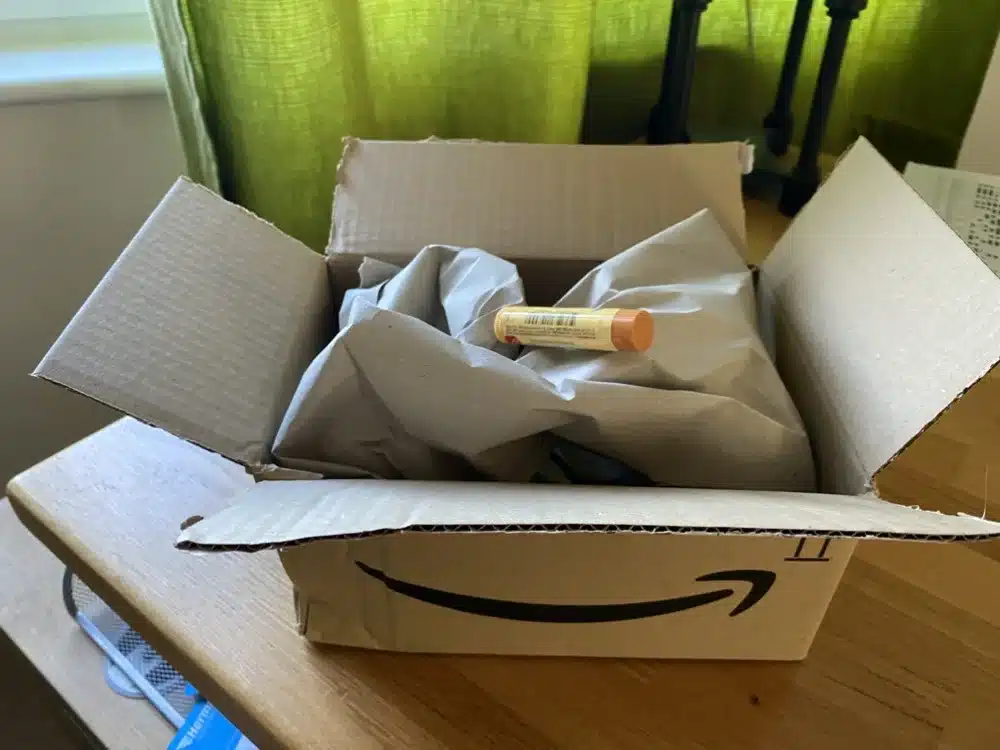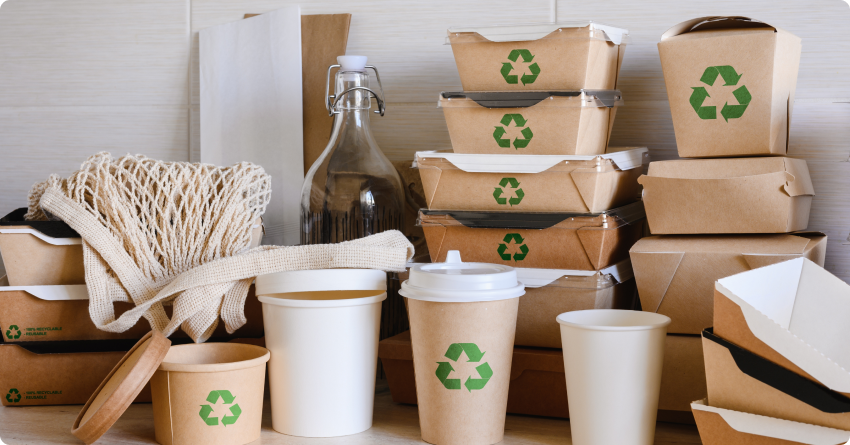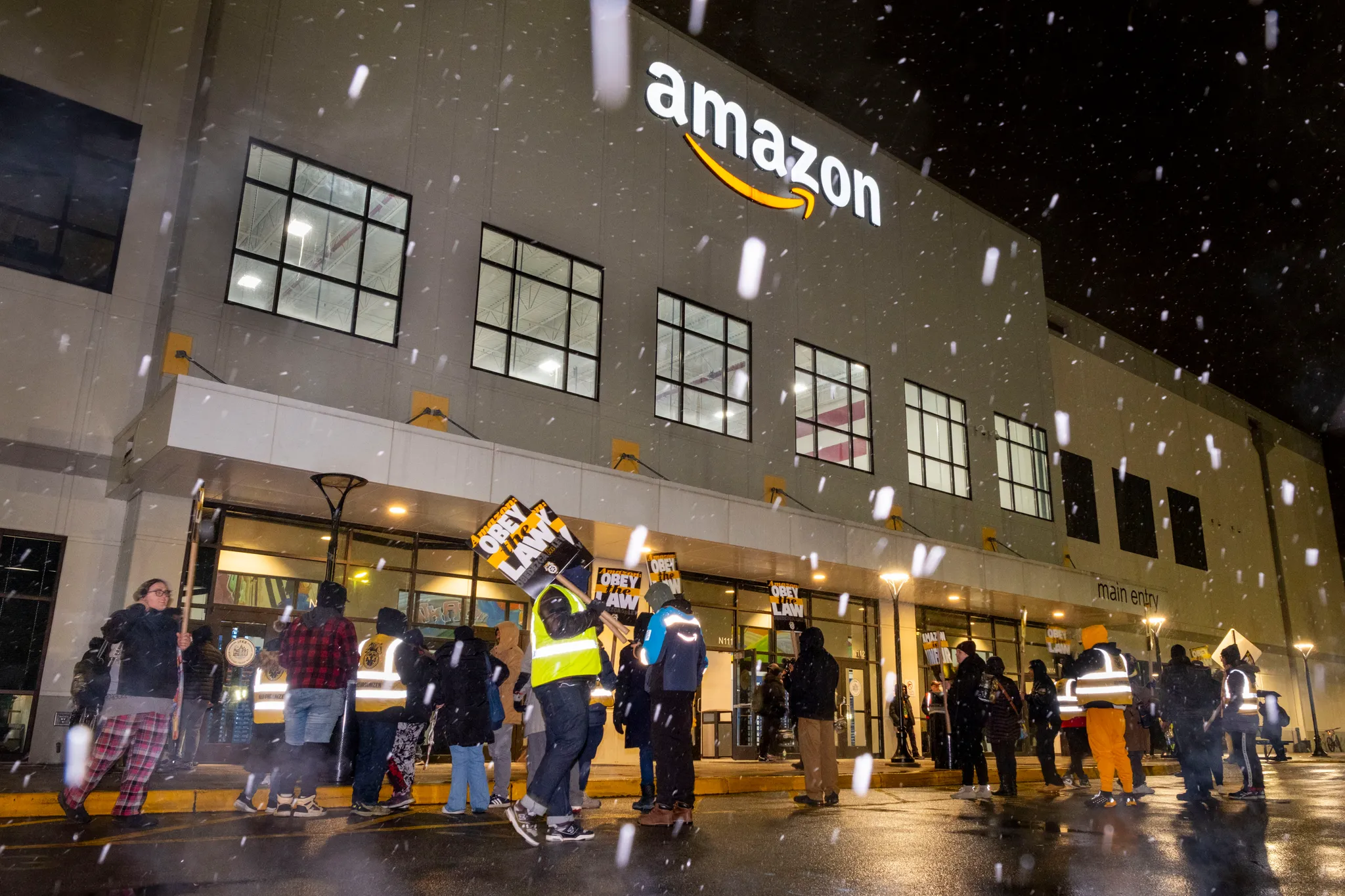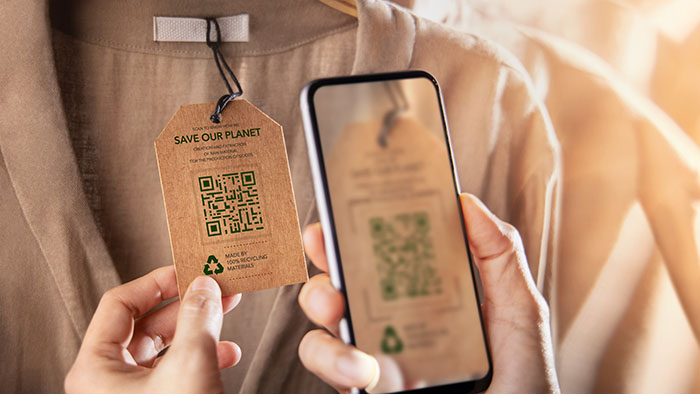Eco-Friendly or Just Easier to Swallow?
There’s something weirdly comforting about clicking the little “eco-friendly delivery” box at checkout. It gives this short burst of moral satisfaction, like recycling a straw or using a tote bag to carry six plastic-wrapped avocados. It makes people feel better about the fact that another cardboard box will show up on the doorstep tomorrow morning. Sustainability has basically become the new social currency of shopping. It’s not about if companies are becoming greener anymore, it’s about how good they’ve gotten at sounding like they are.
Two of the biggest online marketplaces, Amazon and Etsy, have both built marketing empires around this idea. Amazon talks about “Less Packaging” and “Frustration-Free Delivery.” Etsy promotes “100% carbon-neutral shipping.” Both sound great on the surface, the perfect mix of convenience and conscience. But when the corporate paint starts to chip, the picture underneath isn’t as pretty.
Amazon’s packaging has been a running joke for years. People order batteries and get them in boxes big enough to fit a small dog. The criticism got so loud that Amazon launched a handful of “sustainable” delivery options: the Ships in Own Container program, Frustration-Free Packaging, and Less Packaging deliveries. The idea is to cut down on materials, make shipping lighter, and reduce the carbon footprint of each package.
At face value, that sounds like progress. Amazon claims these programs have already removed thousands of tons of excess cardboard and plastic from circulation. But whether that makes any real environmental difference, beyond the PR appeal, is another question.
Using less packaging obviously helps a little, but it also helps Amazon’s bottom line. Smaller boxes mean more orders fit on a single truck, which saves money on fuel and space. It’s logistics disguised as climate action. Amazon’s green image isn’t just about saving trees, it’s about making the machine run smoother and cheaper. Sustainability and efficiency just happen to overlap.
Even when the packaging is reduced, most of it still ends up in household recycling bins, assuming people even bother to recycle. Contamination rates are high, and local recycling systems vary wildly. The real environmental hit comes from the shipping chain itself, the warehouses, the trucks, the planes, the endless “last-mile” delivery trips. A thinner layer of cardboard doesn’t offset the scale of a system built to deliver billions of things faster every year.
Amazon’s entire model depends on speed and volume, not restraint. It encourages people to buy more, more often, and ship it faster. Calling that sustainable is like calling a fast-food restaurant healthy because the napkins are compostable. It’s not a green revolution. It’s optimisation with better PR.
Etsy sells itself as the opposite of Amazon. It’s marketed as handmade, independent, small-scale, and ethical. In 2019, Etsy announced it had achieved “100% carbon-neutral shipping,” meaning every order’s emissions are supposedly offset through verified environmental projects. The statement went viral. It sounded like a miracle: guilt-free shopping that supported artists and saved the planet at the same time.
But, like everything that sounds too neat, it’s more complicated than that.
Etsy hasn’t eliminated its emissions, it just pays to make up for them. The company funds carbon offsets that support reforestation, renewable energy, or conservation projects to “balance” the pollution from shipping. The problem is that offsets have a long and shaky reputation. Studies have shown that a lot of offset programs overstate their results, double-count credits, or simply fail. Trees burn down. Land gets reused. The numbers don’t always add up, and the atmosphere doesn’t do accounting.
Offsets are basically a trade system for guilt. A company pollutes here, pays someone there, and calls it even. It’s like buying forgiveness. And in Etsy’s case, it doesn’t address the actual emissions from the planes and trucks that move all those parcels. The “neutral” label doesn’t make the pollution disappear, it just moves the paperwork around.
Etsy’s system also quietly shifts responsibility onto its sellers. The company encourages sellers to buy shipping labels directly through its platform “to maintain carbon neutrality.” It sounds helpful, but it also centralises Etsy’s control and data. Sellers who handle their own postage fall outside that neat “neutral” narrative. It’s marketed as sustainability, but it doubles as a business tactic, one that keeps profits and control inside Etsy’s ecosystem.
This is what’s called
greenwashing, using eco-friendly language, design, or branding to make something seem more ethical than it really is. It doesn’t have to be a total lie. Amazon really does use less cardboard. Etsy really does fund reforestation. But the scale and framing matter. Small actions are blown up into big claims. A company can spend 1% of its operations on sustainability and talk about it like it’s a full transformation.
Greenwashing works because it gives people emotional relief. It turns shopping into activism. Buy this mug, and you’re saving a tree. Click this button, and you’ve offset your carbon footprint. It turns consumption itself into the solution, which is the biggest trick of all.
The biggest contradiction in all of this is scale. The same size that makes Amazon and Etsy powerful also makes them unsustainable. Global delivery networks burn through massive amounts of energy no matter how many cardboard flaps are cut off. “Green delivery” sounds nice, but the infrastructure that supports it, planes, fuel, trucks, constant packaging, can’t be eco-friendly by design.
True sustainability would require slowing things down and producing less, not shipping faster. But that clashes with everything these platforms are built on. The phrase “carbon-neutral next-day delivery” is basically an oxymoron. One side of the promise cancels out the other.
Etsy and Amazon also avoid mentioning labour in their sustainability reports. Warehouse workers, delivery drivers, and small sellers all carry the physical and financial cost of convenience culture. No amount of recycled cardboard changes that. The planet isn’t the only thing being overworked.
By Dakota Santiago/The New York Times
Real sustainability in e-commerce wouldn’t be about pretending the current system works, it would mean changing it. That starts with transparency. Platforms could publish full data on emissions per shipment, not just offsets. They could use renewable energy across their transport networks, not just in warehouses.
Amazon’s renewable energy reports talk about solar-powered fulfilment centres, but the delivery process, the vans, flights, and packaging, still runs mostly on fossil fuels. Etsy’s own environmental statements focus on offset projects but skip over packaging materials and waste data. The missing parts are where the actual damage lives. A genuinely sustainable version of these companies would involve slower, more deliberate logistics, consolidated shipping, regional fulfilment, biodegradable packaging, and clear product tracing. Etsy could encourage local delivery networks or group shipments regionally instead of scattering single parcels across the globe. Amazon could push for “carbon accounting” per product, where every listing shows its shipping impact.
This is already being discussed in the fashion world through the idea of a digital product passport, a QR code that tracks every stage of a garment’s life cycle. If that same logic applied to e-commerce, people could scan a package and see where it came from, how it was shipped, and what it cost environmentally. Transparency isn’t flashy, but it’s a start. By Antonia Renner/Informatica
Sustainability marketing works because it isn’t about facts, it’s about feelings. Clicking “eco delivery” feels good. Seeing “carbon neutral” in a soft green font feels clean. The language is gentle, reassuring, and deliberately vague. People rarely check what those terms actually mean because the emotional hit comes first, the sense of having done something responsible without giving anything up.
That’s the whole business model. It’s guilt management disguised as progress.
Amazon and Etsy have both mastered it: they’ve learned that people don’t want to stop shopping, they just want to feel better about it. The “green” box at checkout gives them that feeling for free.
Sustainability marketing works because it isn’t about facts, it’s about feelings. Clicking “eco delivery” feels good. Seeing “carbon neutral” in a soft green font feels clean. The language is gentle, reassuring, and deliberately vague. People rarely check what those terms actually mean because the emotional hit comes first, the sense of having done something responsible without giving anything up.
Amazon and Etsy represent the same paradox: a desire to save the planet without changing how anything actually works. Both have learned to turn efficiency and carbon offsets into emotional currency. The results aren’t meaningless, small steps still matter, but they don’t solve the real problem. The greenest delivery is the one that doesn’t happen.
Until that’s faced, sustainability will keep being a brand, not a practice. Consumers will keep buying the story as much as the product, and corporations will keep selling both. The boxes might be smaller, but the illusion still fits.
- Akhzar, P. (2023, October 25). How to Recycle Cardboard Boxes: 7 steps for a Greener World. Arka. www.arka.com/…
- Amazon and wasteful packaging. Kirkville. (2023, April 27). www.kirkville.com/…
- Amazon Staff. (2020, October 1). Amazon unveils its largest fulfillment center solar panel installation in Europe. EU About Amazon. www.aboutamazon.eu/news/…
Clark, D. (2011, September 16). A complete guide to carbon offsetting. The Guardian. www.theguardian.com/…
Committing to a world of good. Etsy. (n.d.). www.etsy.com/impact
- Gen Zers and millennials are making climate-conscious buying decisions - marketing charts. Marketing Charts. (2024, June 7). www.marketingcharts.com/…
- Gibson, K. (2019, February 27). Etsy to offset carbon emissions from shipping its products. CBS News. www.cbsnews.com/…
- Green packaging: Examples & benefits: Ernest Packaging Solutions. Ernest Packaging. (2025, February 4). www.ernestpackaging.com/…
- Hayes, A. (2025, August 7). Understanding greenwashing: Definition, examples, and statistics. Investopedia. www.investopedia.com/…
- Home - Amazon Sustainability. (n.d.). www.sustainability.aboutamazon.com/
- McGregor, K. (2025, April 14). Digital product passports: Lessons from an early adopter. Vogue Business. www.voguebusiness.com/…
Renner, A. (2024, January 16). The digital product passport - 5 essential insights for your business’ success. @informatica. www.informatica.com/…
- Reports. Amazon Sustainability. (n.d.). www.sustainability.aboutamazon.com/reports
- Saunokonoko, M. (2023, March 1). How this giant Amazon Box hid a tiny surprise. Why is Amazon packaging so big. www.9news.com.au/…
- Scheiber, N., & Nerkar, S. (2024, December 21). Amazon warehouse workers in New York City join protest. The Seattle Times. www.seattletimes.com/…
APA Style Citations
